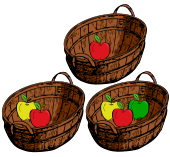
Back Иԥсабаратәу ахыԥхьаӡара Abkhazian Natuurlike getal Afrikaans Natürliche Zahl ALS የተፈጥሮ ቁጥር Amharic Numero natural AN प्राकृतिक संख्या ANP عدد طبيعي Arabic عاداد طبيعي ARY عدد طبيعى ARZ স্বাভাৱিক সংখ্যা Assamese

In mathematics, the natural numbers are the numbers 0, 1, 2, 3, etc., possibly excluding 0.[1][under discussion] Some define the natural numbers as the non-negative integers 0, 1, 2, 3, ..., while others define them as the positive integers 1, 2, 3, ....[a] Some authors acknowledge both definitions whenever convenient.[2] Some texts define the whole numbers as the natural numbers together with zero, excluding zero from the natural numbers, while in other writings, the whole numbers refer to all of the integers (including negative integers).[3] The counting numbers refer to the natural numbers in common language, particularly in primary school education, and are similarly ambiguous although typically exclude zero.[4]
The natural numbers can be used for counting (as in "there are six coins on the table"), in which case they serve as cardinal numbers. They may also be used for ordering (as in "this is the third largest city in the country"), in which case they serve as ordinal numbers. Natural numbers are sometimes used as labels—also known as nominal numbers, (e.g. jersey numbers in sports)—which do not have the properties of numbers in a mathematical sense.[2][5]
The natural numbers form a set, often symbolized as . Many other number sets are built by successively extending the set of natural numbers: the integers, by including an additive identity 0 (if not yet in) and an additive inverse −n for each nonzero natural number n; the rational numbers, by including a multiplicative inverse for each nonzero integer n (and also the product of these inverses by integers); the real numbers by including the limits of Cauchy sequences[b] of rationals; the complex numbers, by adjoining to the real numbers a square root of −1 (and also the sums and products thereof); and so on.[c][d] This chain of extensions canonically embeds the natural numbers in the other number systems.
Properties of the natural numbers, such as divisibility and the distribution of prime numbers, are studied in number theory. Problems concerning counting and ordering, such as partitioning and enumerations, are studied in combinatorics.
- ^ Cite error: The named reference
Endertonwas invoked but never defined (see the help page). - ^ a b Weisstein, Eric W. "Natural Number". mathworld.wolfram.com. Retrieved 11 August 2020.
- ^ Ganssle, Jack G. & Barr, Michael (2003). "integer". Embedded Systems Dictionary. Taylor & Francis. pp. 138 (integer), 247 (signed integer), & 276 (unsigned integer). ISBN 978-1-57820-120-4. Archived from the original on 29 March 2017. Retrieved 28 March 2017 – via Google Books.
- ^ Weisstein, Eric W. "Counting Number". MathWorld.
- ^ "Natural Numbers". Brilliant Math & Science Wiki. Retrieved 11 August 2020.
Cite error: There are <ref group=lower-alpha> tags or {{efn}} templates on this page, but the references will not show without a {{reflist|group=lower-alpha}} template or {{notelist}} template (see the help page).
© MMXXIII Rich X Search. We shall prevail. All rights reserved. Rich X Search

